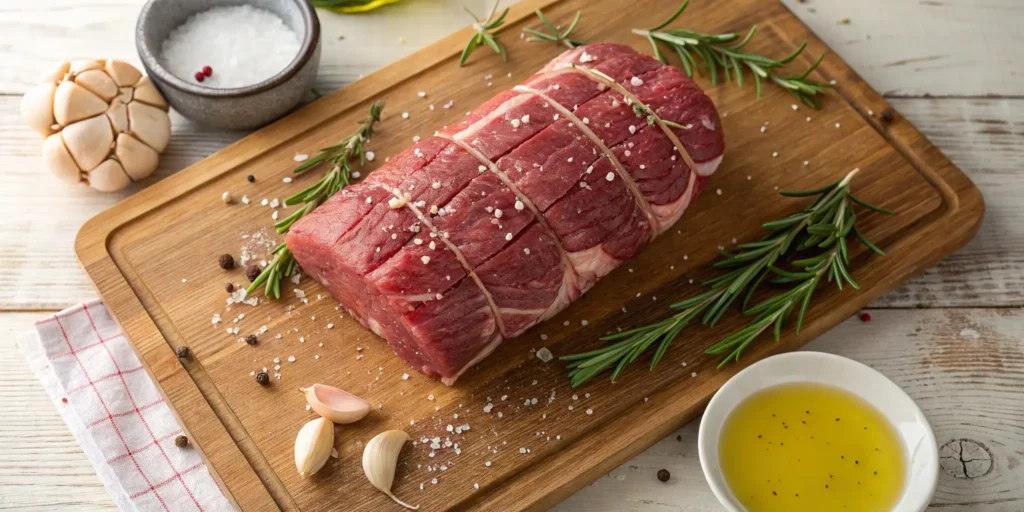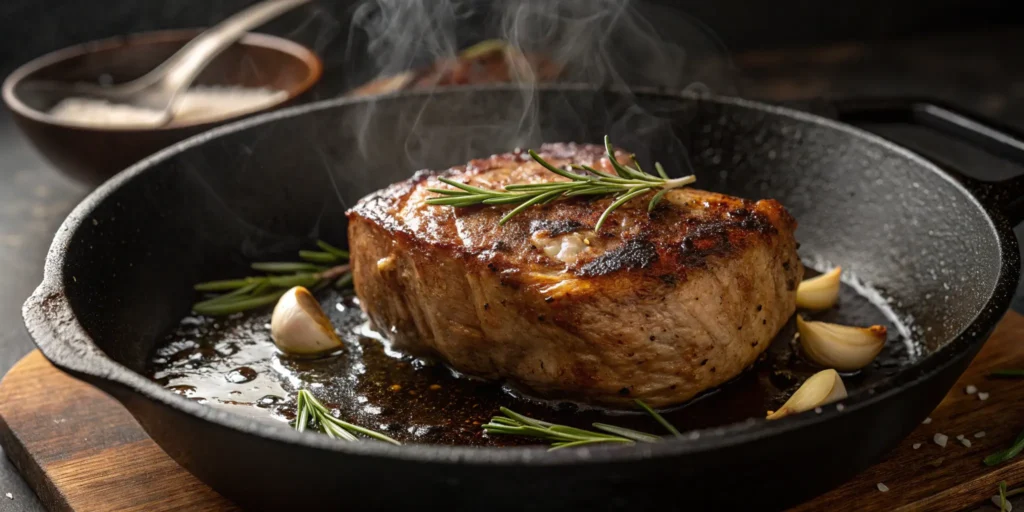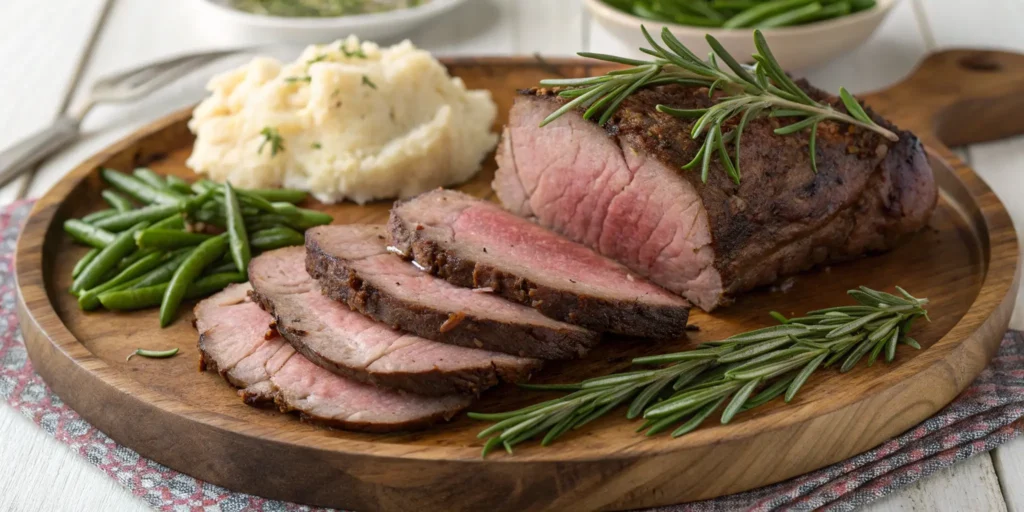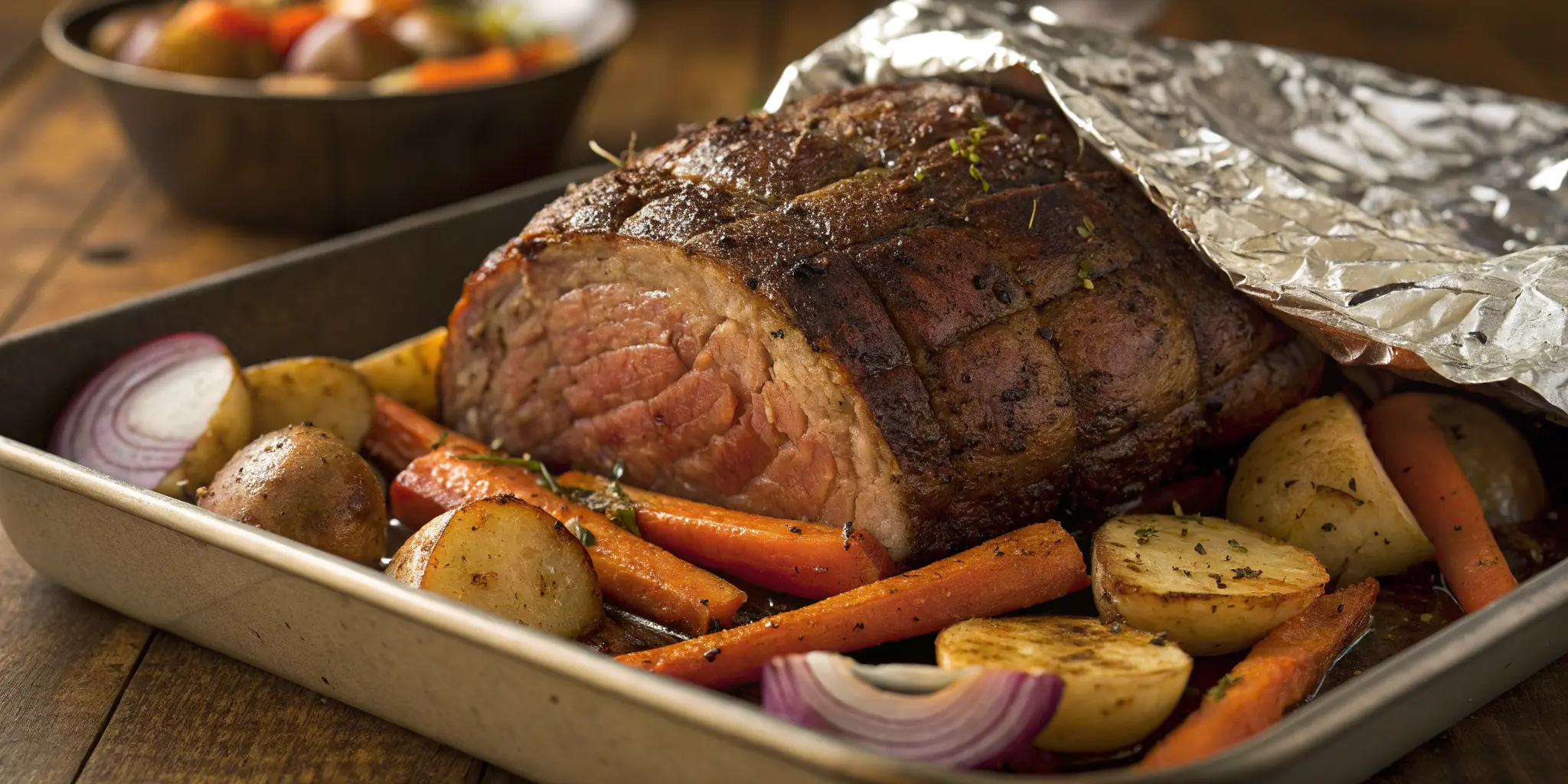Oven Roast: 7 Steps to Make the Perfect Roast
Table of Contents
A Roast Worth Remembering: Why the Oven Roast Is a Timeless Classic
There’s something about the scent of a roast in the oven that instantly makes your kitchen feel like home. Whether it’s a family Sunday dinner or a cozy holiday gathering, an oven roast has a way of bringing everyone together. It’s not just about feeding people; it’s about creating an experience. And the good news? You don’t need to be a professional chef to master it. With the right cut, method, and a few insider tips, you’ll learn how to make the perfect oven roast—a dish that wins hearts with every bite.
Choosing the Right Cut for Your Oven Roast
Before you start cooking, the most important decision you’ll make is selecting the right cut of meat. Your choice will determine the tenderness, flavor, and overall success of your roast.
Top Cuts of Meat for Oven Roasting
- Ribeye Roast: Rich in marbling and flavor, ideal for special occasions.
- Sirloin Tip Roast: Leaner, great for slicing and serving with sides.
- Chuck Roast: Affordable and well-marbled, perfect for slow roasting.
- Eye of Round: Lean and budget-friendly, best when cooked to medium-rare.
- Tenderloin Roast: Premium choice, very tender, excellent for celebrations.
How to Choose Wisely
- Marbling Matters: Look for white streaks of fat within the muscle; more marbling equals more flavor.
- Match the Occasion: Use tenderloin or ribeye for festivities, chuck or round for everyday meals.
- Ask the Butcher: Don’t hesitate to get advice—a knowledgeable butcher is a cook’s secret weapon.
Ingredients You’ll Need
To achieve a roast that’s bursting with flavor, your ingredients need to be fresh and balanced. Here’s a foundational recipe to get you started:
Basic Ingredients Table
| Ingredient | Quantity | Notes |
|---|---|---|
| Beef roast | 3–5 lbs | Ribeye or chuck recommended |
| Garlic cloves | 4–6 | Fresh, sliced |
| Fresh rosemary | 2–3 sprigs | Optional but aromatic |
| Olive oil | 2 tbsp | Extra virgin |
| Salt | To taste | Kosher salt for better texture |
| Black pepper | To taste | Freshly ground preferred |
| Onion (optional) | 1 large, sliced | For flavor layering |
| Carrots & potatoes | As needed | For a one-pan meal |

How to Prepare the Perfect Oven Roast Step-by-Step
1. Bring the Meat to Room Temperature
Remove your roast from the refrigerator about 30 to 60 minutes before cooking. Cold meat won’t cook evenly, and you risk a dry, tough result.
2. Season the Roast Generously
Pat the roast dry with paper towels. Rub it all over with olive oil, then season generously with salt, pepper, and fresh herbs. Make small incisions and insert garlic slices for deeper flavor.
3. Sear the Roast
In a hot skillet, sear your roast on all sides. This caramelizes the exterior, locks in juices, and builds a flavor-rich crust. Aim for 2–3 minutes per side over medium-high heat.
4. Oven Roasting Temperature & Timing
Preheat your oven to 325°F (165°C). Use a roasting pan or a cast-iron skillet. Place your roast in the center, surrounded by onions, carrots, or potatoes if desired.
| Weight | Desired Doneness | Internal Temp | Approx Time |
| 3 lbs | Medium-rare | 135°F | 1 hr 15 min |
| 4 lbs | Medium | 145°F | 1 hr 45 min |
| 5 lbs | Medium-well | 150–155°F | 2 hrs |
Use a meat thermometer and insert it into the thickest part without touching bone. When you hit the desired temp, take it out immediately.
5. Let It Rest
Resist the urge to slice it right away. Tent the roast with foil and let it rest for 15 to 20 minutes. This allows the juices to redistribute, giving you a moist, tender roast.

Oven Roast Variations and Flavor Profiles
Classic Herb & Garlic
- Rosemary, thyme, garlic, olive oil
- Serve with a red wine reduction sauce
Spicy Cajun Style
- Cajun rub, smoked paprika, cayenne pepper
- Pair with roasted sweet potatoes
Asian-Inspired
- Soy sauce, sesame oil, fresh ginger, garlic
- Great with jasmine rice and steamed greens
Serving Suggestions & Side Dishes
Complement your roast with sides that balance and enhance its flavor.
- Mashed Potatoes: Creamy and buttery, perfect for soaking up juices.
- Roasted Root Vegetables: Carrots, parsnips, and turnips bring earthy sweetness.
- Steamed Green Beans: Add freshness and color to your plate.
- Garlic Bread: Toasty, crispy slices to mop up every drop.
- Wine Pairing: Cabernet Sauvignon or a rich Syrah complements beef roast beautifully.
Common Mistakes to Avoid
Even experienced home cooks can run into trouble with oven roasts. Here’s how to steer clear of the most common pitfalls:
- Skipping the Sear: Builds flavor and texture you can’t fake.
- Overcooking: Always use a thermometer. Trust it more than your timer.
- Not Letting the Roast Rest: Slicing too early spills the juices.
- Carving the Wrong Way: Always slice against the grain for tender bites.
- Poor Seasoning: Under-seasoned roast is bland—don’t be shy with salt and pepper.

Conclusion: Roast Like a Pro Every Time
Perfecting your oven roast isn’t just about following steps—it’s about understanding what makes meat delicious. From picking the right cut to letting it rest before slicing, every detail matters. But once you get the hang of it, you’ll look forward to roast night as a proud tradition.
You don’t need a culinary degree or fancy gadgets. You just need the right information, some good ingredients, and the confidence to give it a try. So the next time you’re planning a dinner worth remembering, skip the takeout. Roast your way to perfection.
FAQ: How to Make the Perfect Oven Roast
What is the best cut of beef for an oven roast?
Chuck roast, ribeye, and sirloin tip are top choices, each offering different textures and levels of richness. Chuck is budget-friendly and flavorful; ribeye is luxurious and tender.
How long should I cook an oven roast?
Timing depends on the size and your desired doneness. Generally, plan on 20–30 minutes per pound at 325°F. Always use a meat thermometer to ensure accuracy.
Should I sear the roast before oven roasting?
Absolutely. Searing enhances flavor and locks in moisture. It’s a step worth the effort.
Can I prepare my oven roast in advance?
Yes. You can season and sear it the day before, then refrigerate. Bring it to room temp before roasting. Reheating? Do it gently to retain moisture.
How do I prevent my roast from drying out?
Use a thermometer, avoid overcooking, and let it rest. These three steps are non-negotiable for a juicy result.

